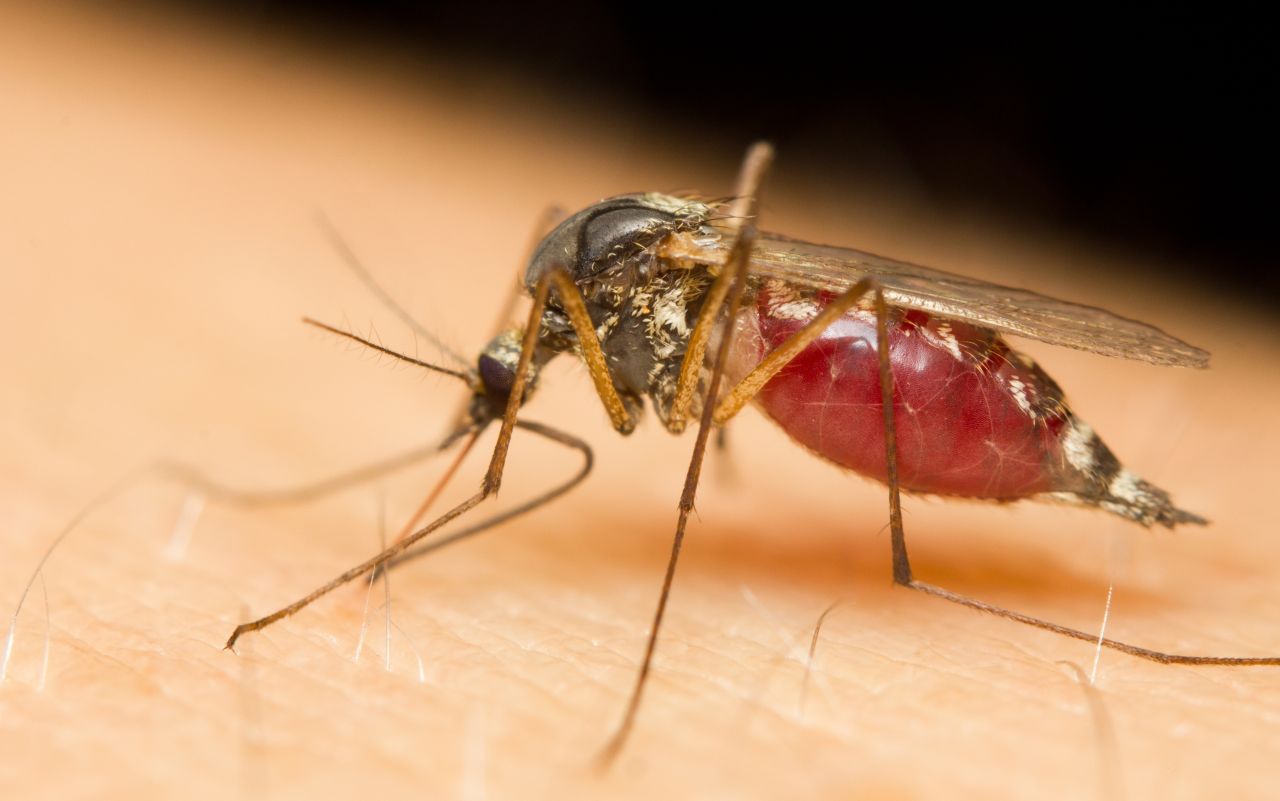Blood on the menu – How do mosquitoes pick a victim?
While male mosquitoes leave us in peace, female mosquitoes seek us out to suck our blood. As a source of protein, blood ensures the development of viable eggs. But it is not the blood itself that attracts the mosquitoes.

No point in hiding. This mosquito can smell you; it can see you; it can feel you. And it will find you. Image: Adobe Stock
So, how do female mosquitoes know where to find their blood meal and whether they are approaching the right animal? Interestingly, mosquitoes are not attracted directly by blood. They have highly evolved sensory systems that allow them to detect the presence of potential hosts from a distance. Female mosquitoes use a combination of visual, olfactory, and thermal cues to locate their host.
The first cue: CO2
Firstly, mosquitoes can detect CO2 exhaled by humans and animals from over 50 meters away. This is one of the most important cues that mosquitoes use to find their host over long distances. Once a mosquito has detected CO2, it will follow the CO2 trail while scanning the surrounding area for visual and odorant cues. It can distinguish between the odors of different species and the individuals it prefers to feed on. When a mosquito gets close enough, it will use its thermal sensors to pinpoint the location of the host and will land on the skin. Finally, before it starts to feed, it will make sure that it has landed on a tasty host and probe through the skin with its proboscis. Only if it is satisfied and has managed to find a blood vessel, will it start sucking up the blood.
Further olfactory cues
In addition to CO2, mosquitoes rely on body odor to find a host but also to differentiate between potential hosts. The process by which female mosquitoes perceive body odor begins with specialized olfactory receptors located in their antennae. These receptors are sensitive to specific volatile compounds and send signals to the mosquito's brain when they detect a particular chemical in the air. Body odor is caused partly by the production and emission of volatile organic compounds by the body. It is a complex blend influenced by various factors such as diet, age, genetics and personal hygiene habits. However, the main contributor to body odor are skin bacteria that produce odorous compounds by digesting our sweat. The skin bacteria vary not only among species, but also among individuals and so everyone produces a slightly different odor that mosquitoes may perceive and show preferences for. Some chemicals that are particularly attractive to mosquitoes are lactic acid, ammonia, some carboxylic acids, acetone and sulcatone.
Visual and thermal cues
Mosquitoes also use visual and thermal cues to locate their host. They are attracted to specific colors and can detect movement. They also perceive the warmth emitted by our bodies thanks to a receptor (Ir21a) expressed in the olfactory neurons in their antennae, which is activated by cooler temperatures. This means that if a female mosquito is moving away from the warm-blooded host, the receptor will be activated to put the mosquito back on track. And this is a very useful mechanism to have, as it helps the mosquitoes to precisely find our blood vessels, the warmest spot on our skin.
How do we measure mosquito attraction?
In our laboratory, we investigate the olfactory cues that mosquitoes prefer. To study this, we use a uniport olfactometer, a tool consisting of a start canister with a sliding door, a cylindrical tube, a trap and a rectangular box. In each experiment, 30 female mosquitoes are contained in the start canister and a worn sock (odor source) is placed inside the rectangular box on the other end of the cylindrical tube. Constant airflow and CO2 are introduced into the rectangular box. This airflow carries the odors kept on worn socks and reaches mosquitoes that are waiting in the start canister. Once the door slides, if attracted, mosquitoes fly toward the odor source and get trapped. After a few minutes, we count the number of mosquitoes which are present in the trap. The experiment is performed for each odor source separately. Comparing the results allows us to assess the attractiveness of the odor source (the person who had worn the nylon sock). Depending on the mosquito species used, we will adjust the conditions: if e.g. it is a night-feeder, we will study it in the dark using only red light (mosquitoes cannot detect red light).
Did you know?
Mosquito olfactory receptors are so sensitive that they can detect incredibly low concentrations of volatile compounds in the air. For example, mosquitoes can detect lactic acid at concentrations as low as 1 part per billion, which is equivalent to a single drop of lactic acid in an Olympic-size swimming pool.
They are not all after us …
Only 100 out of 3 500 mosquito species feed on humans. Of these, the most important in terms of disease transmission are the Anopheles, Aedes, and Culex mosquito species. Check out our article "Bloody-minded mosquitoes" to find out more.
References
Greppi C et al. 2020. Mosquito heat seeking is driven by an ancestral cooling receptor. Science 367(6478): 681-684. DOI: 10.1126/science.aay9847




